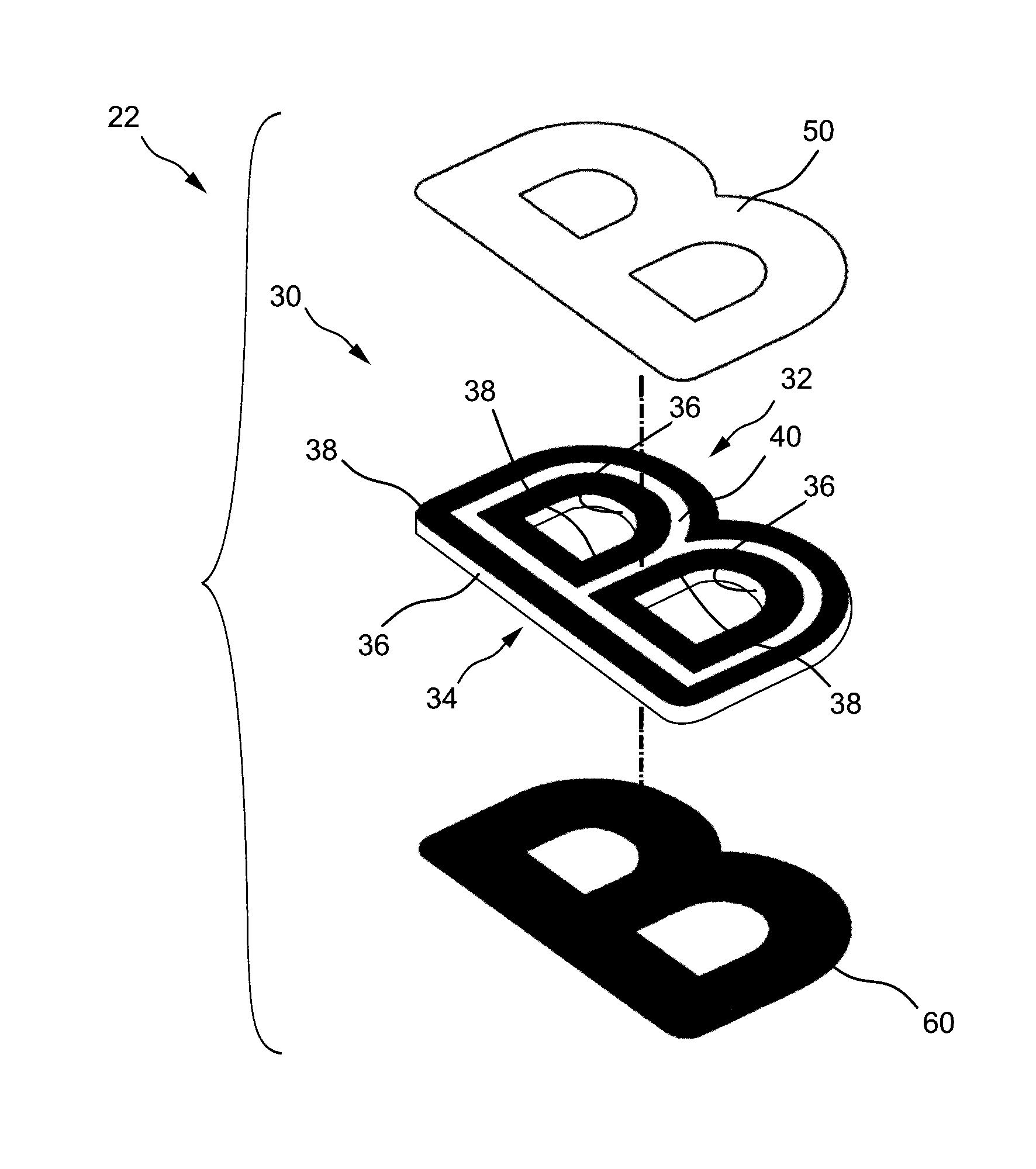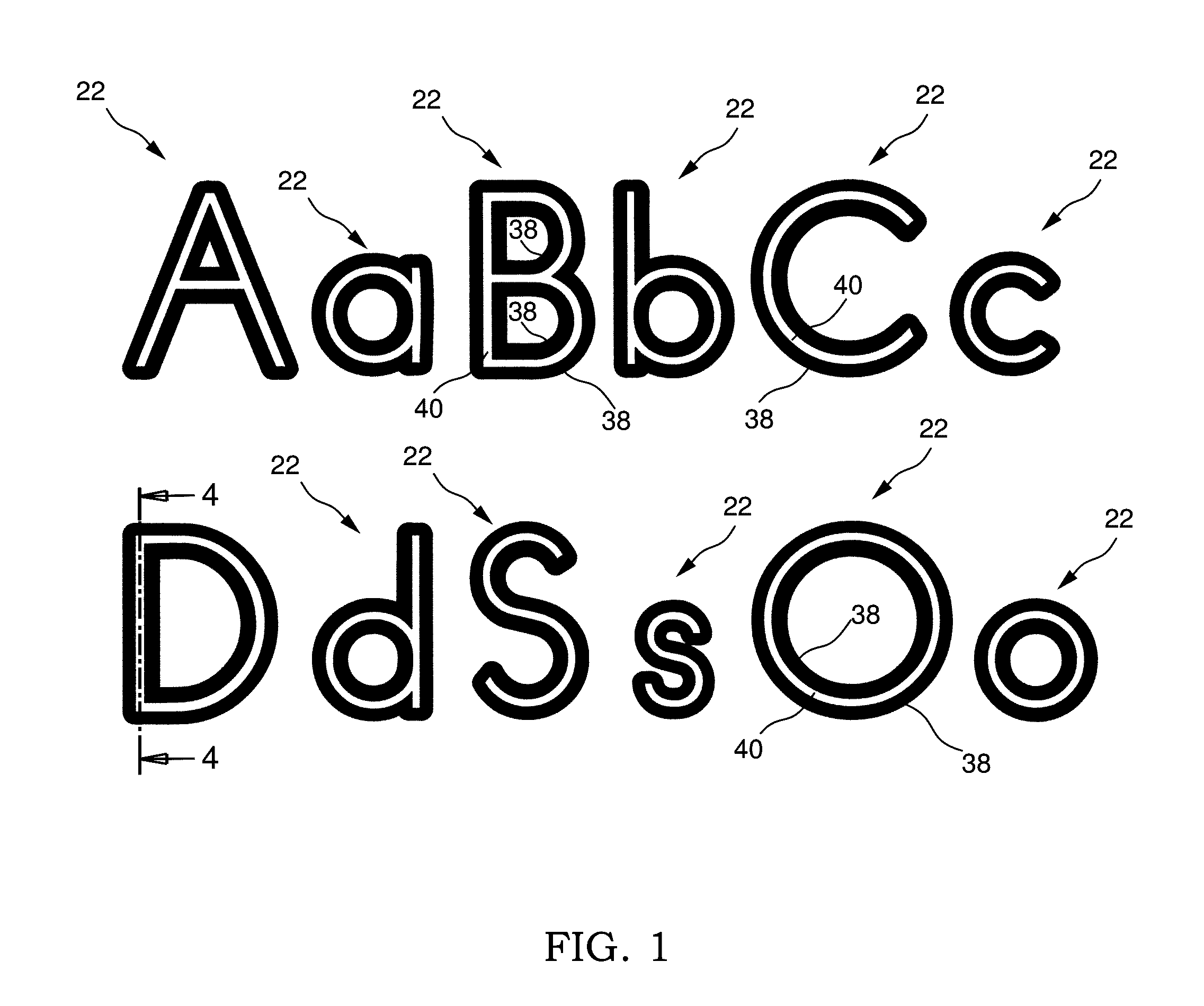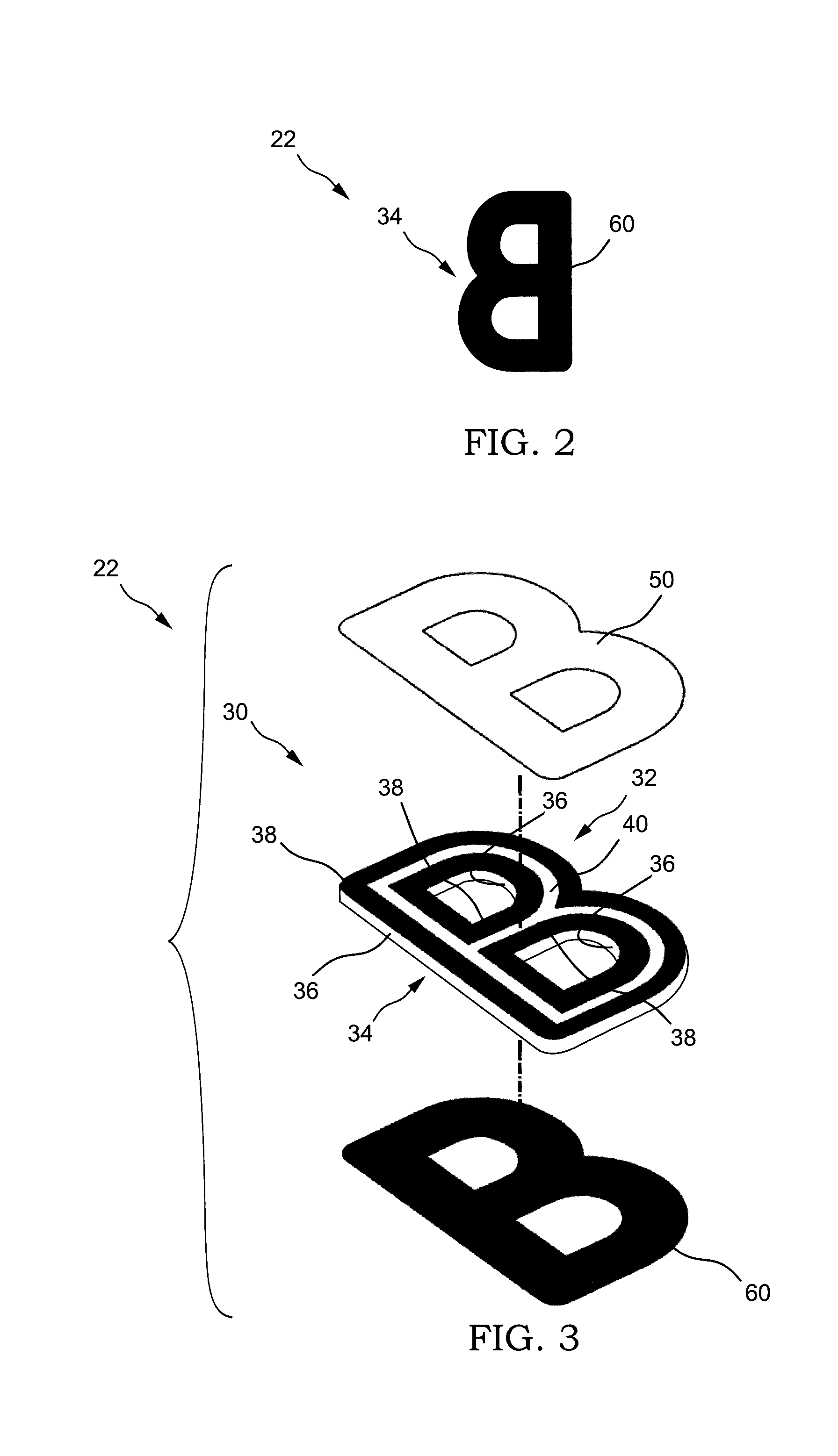Multisensory literacy instruction system
a literacy instruction and multi-sensory technology, applied in the field of literacy instruction, can solve the problems of affecting the flow of the writing process, exacerbate the problem, cumbersome process, time-consuming process,
- Summary
- Abstract
- Description
- Claims
- Application Information
AI Technical Summary
Benefits of technology
Problems solved by technology
Method used
Image
Examples
Embodiment Construction
[0040]Referring initially to FIG. 1, there is illustrated a top plan view of a plurality of pieces 22 of a literacy instruction system. FIGS. 2 and 3 show, respectively, a bottom plan view and an enlarged exploded perspective view of a piece 22 of the system. Each piece 22 has a body 30 having a top face 32, an opposite bottom face 34, and an external edge 36. Top face 32 of each piece has a raised outline 38 which defines a groove 40 therewithin. Each groove 40 is a continuous path in the shape of a character used in writing, such as a letter, numeral, geometric shape, punctuation mark, or symbol.
[0041]As shown in FIGS. 1 and 3, a single piece 22 may include more than one raised outline 38 as required to define the shape of a character, such as a character which encircles a hole (e.g., ‘a’, ‘o’). For example, the upper case ‘C’ piece has one raised outline 38, the upper case ‘O’ piece has two raised outlines 38 (encircling one hole), and the upper case ‘B’ piece has three raised ou...
PUM
 Login to View More
Login to View More Abstract
Description
Claims
Application Information
 Login to View More
Login to View More - R&D
- Intellectual Property
- Life Sciences
- Materials
- Tech Scout
- Unparalleled Data Quality
- Higher Quality Content
- 60% Fewer Hallucinations
Browse by: Latest US Patents, China's latest patents, Technical Efficacy Thesaurus, Application Domain, Technology Topic, Popular Technical Reports.
© 2025 PatSnap. All rights reserved.Legal|Privacy policy|Modern Slavery Act Transparency Statement|Sitemap|About US| Contact US: help@patsnap.com



